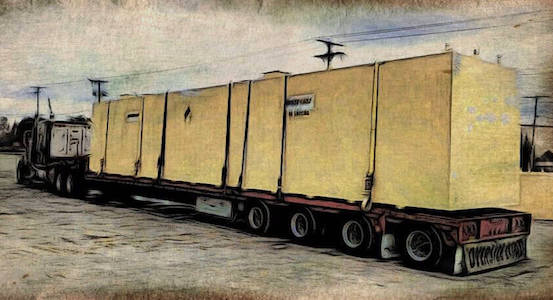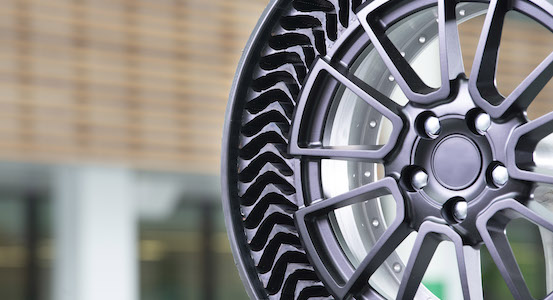
Supply Chain Links
January 13, 2023
Just the FAQs
January 27, 2023Toward Smoother, Safer Rolling

The Airless Tire
The Hankook Hexonic.
The Michelin Uptis.
The Bridgestone Ecopia.
Nope. These are not titles for upcoming sci-fi movies. They’re new kinds of tires designed with safety and performance and cost-cutting in mind.
When we think of tires, we usually think rubber and air. Air escapes, sooner or later, and so there’s an ongoing dance of proper inflation. Tire pressure has your tread contact with the road under-inflated, over-inflated, or properly inflated. Whether riding a tricycle or an 18-wheeled commercial truck, that pressure informs safety, longevity, cost, and comfort.
From its earliest form (click HERE to read our story about the potter’s wheel), that round thing has evolved. It’s no surprise that technology has reached the tire world.
The Hankook Hexonic is an autonomous car tire prototype with “multiple hexagonal modules that can split apart to create water passages” and sensors designed to respond to road temperature and road surfaces.
The Michelin Uptis (Unique Puncture-Proof Tire System) is scheduled to market launch in 2024. Its innovation is an “airless mobility solution” that reduces the risk of flat tires from punctures and road hazards.
The Bridgestone Ecopia boasts advanced tread life and retreadable casings. It utilizes a special polymer to improve rolling resistance, a repositioning of the ply end to offset the high-stress areas of the sidewall, and a waved strip of steel cords to create and maintain a stable footprint.
These three, and more, are designed with an eye toward fuel savings, emission reduction, and safety.
According to Business and Learning Resources, in 2019 the United States had about 304 million scrap tires. About 75% of those tires were recycled into things such as asphalt, vehicle products, and landscaping mulch. And while that statistic is impressive, it’s down from 2013’s numbers, when 96% of scrap tires were recycled.
We also burn tires: to get rid of them and for fuel. And they create noxious pollution.
If we can increase the longevity ⏤ and safety and economy ⏤ of our tires, everybody wins.
